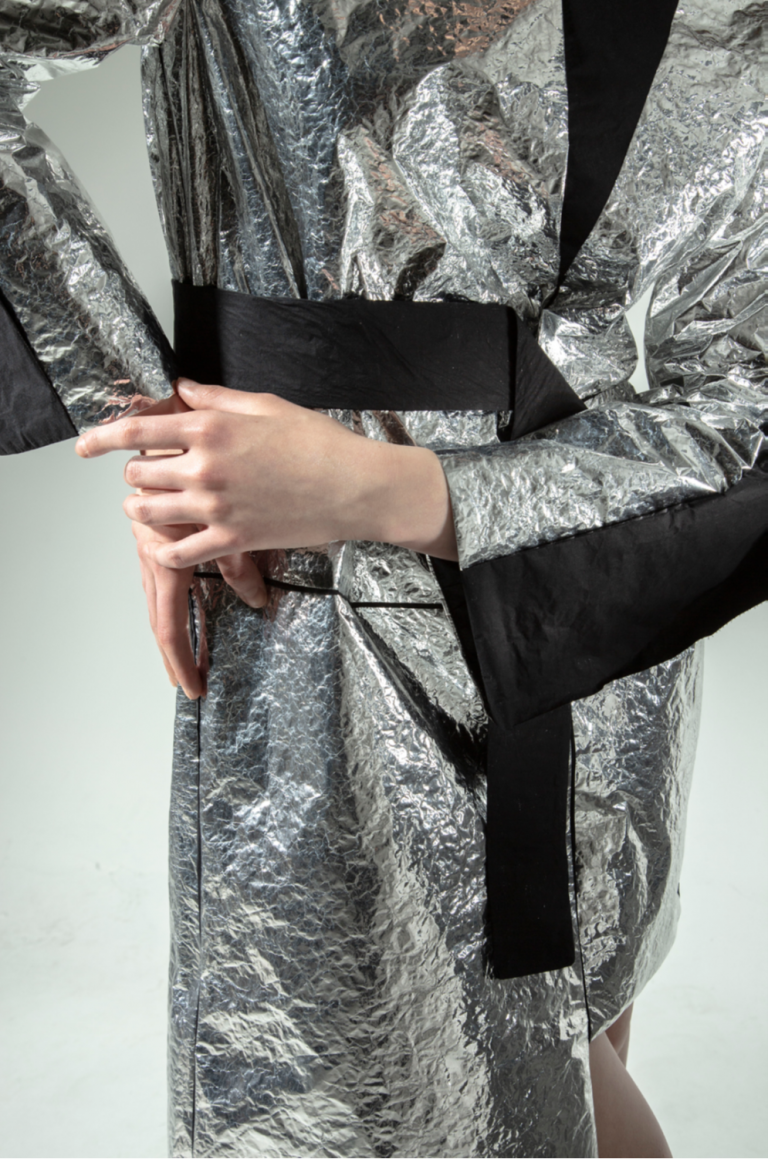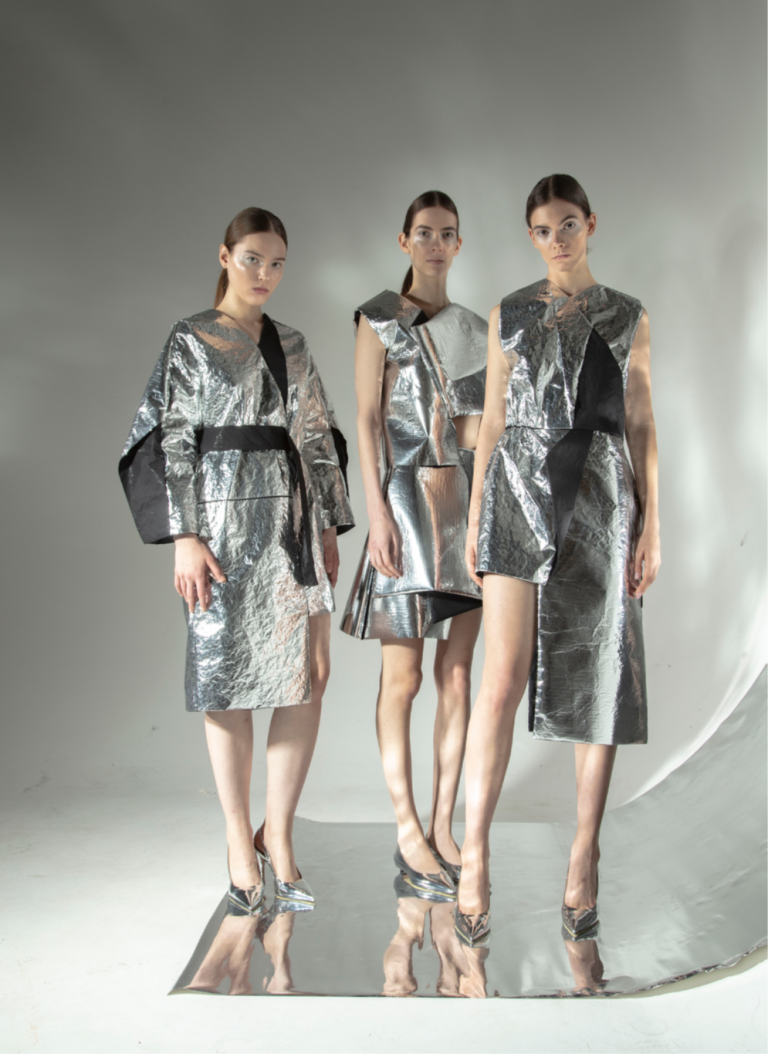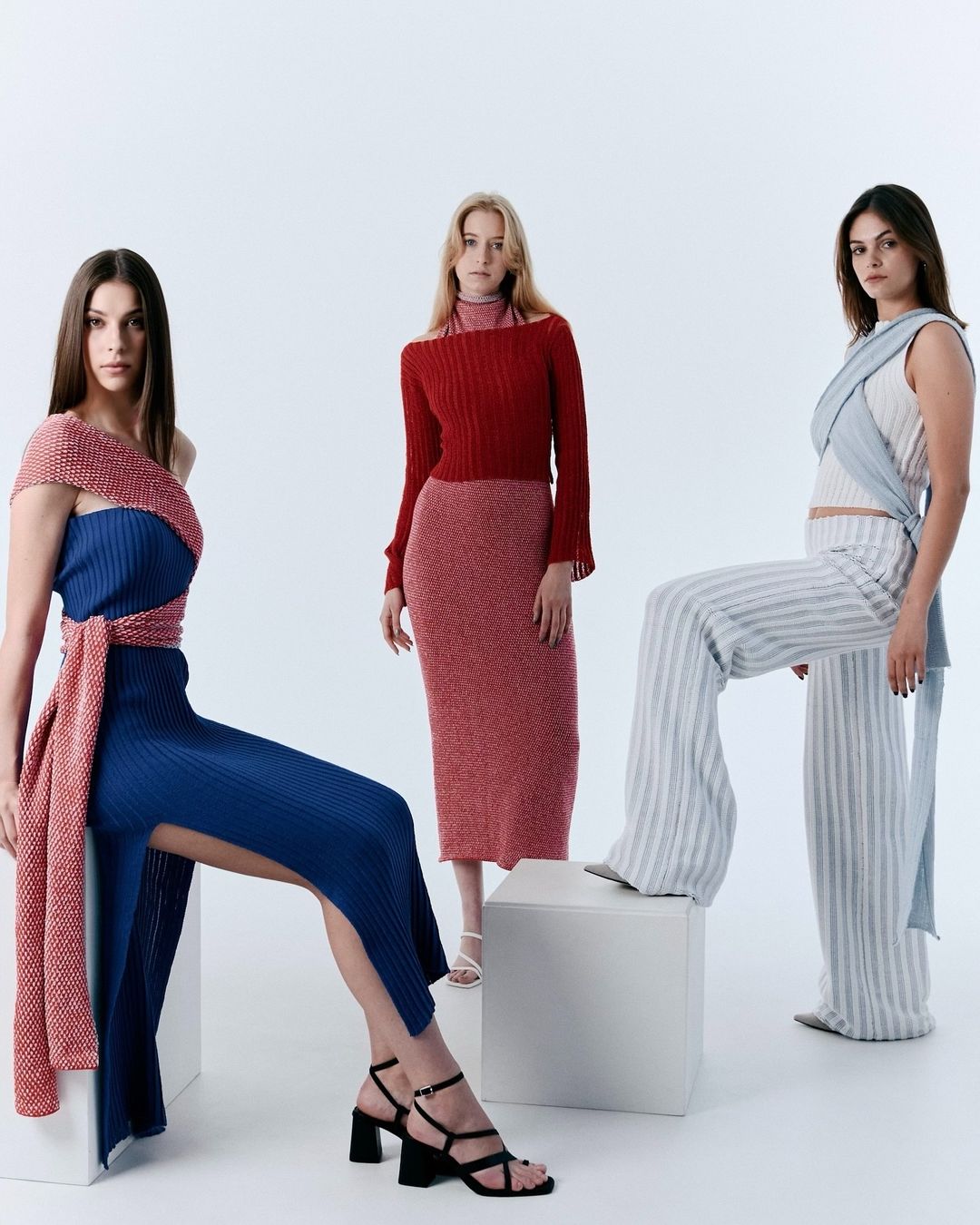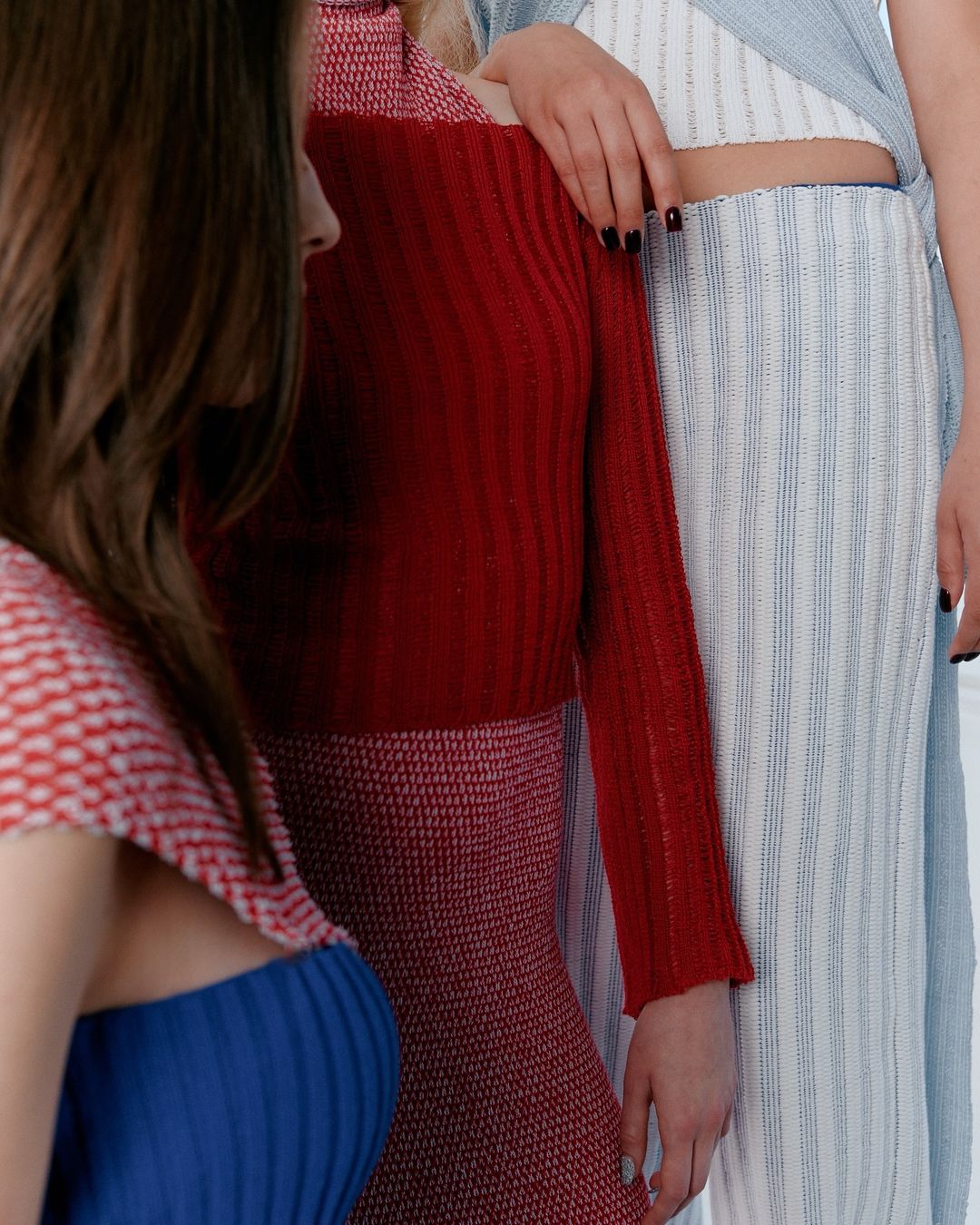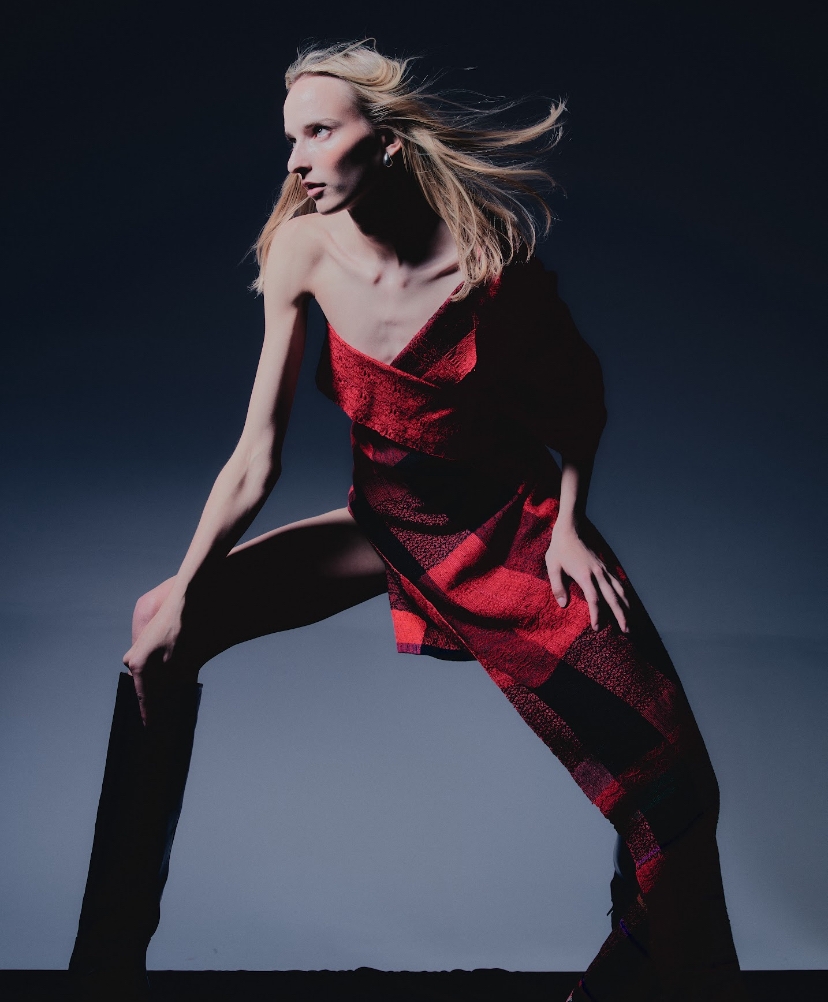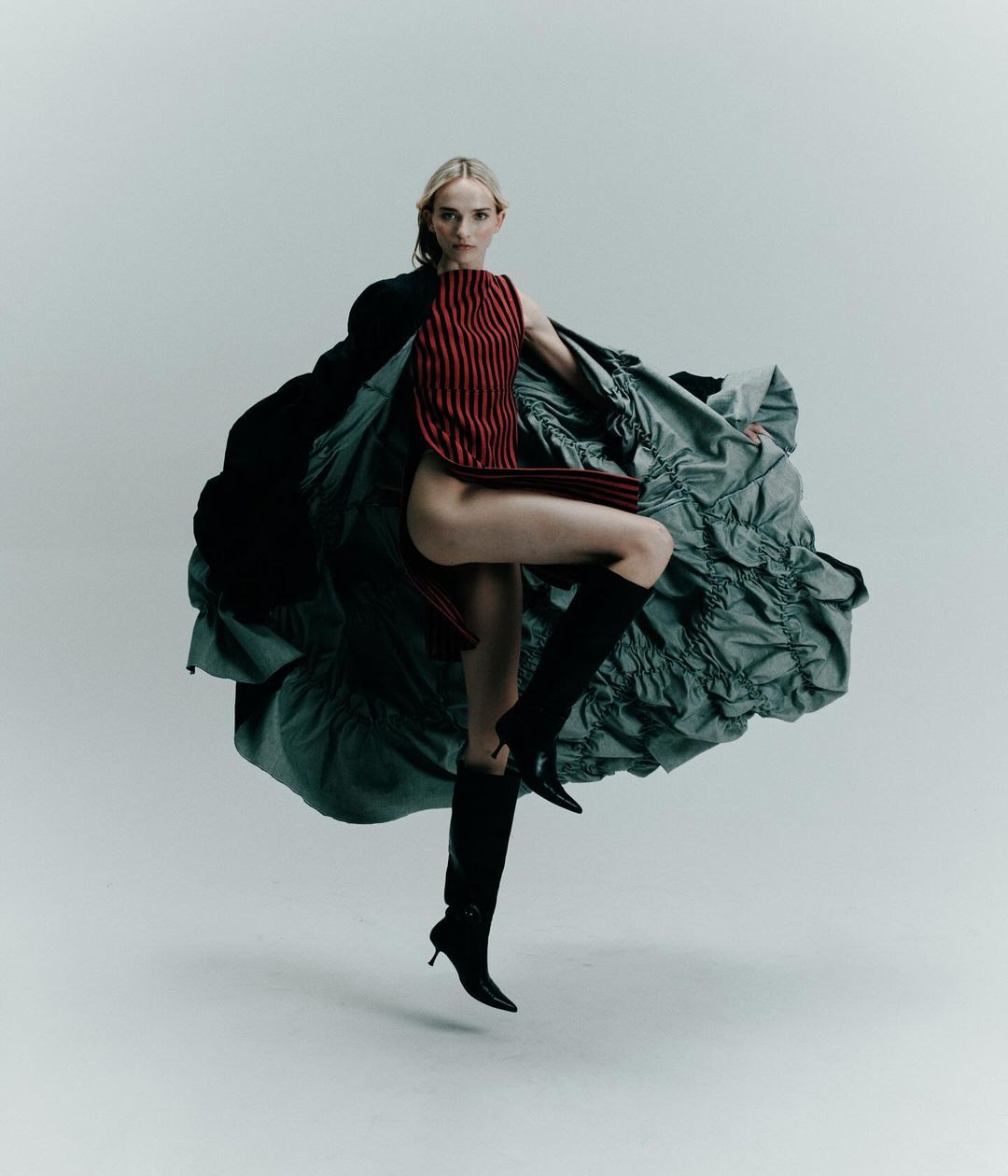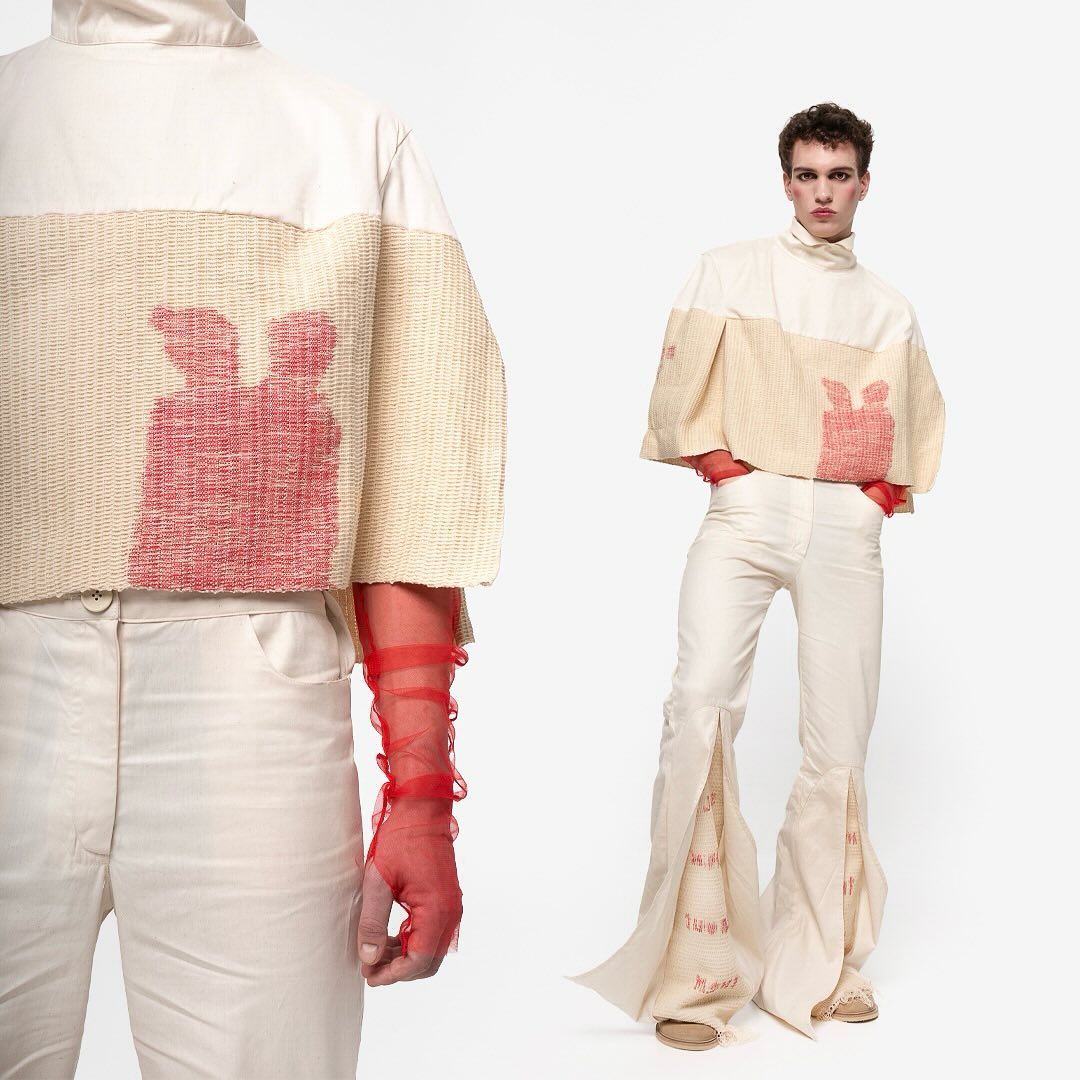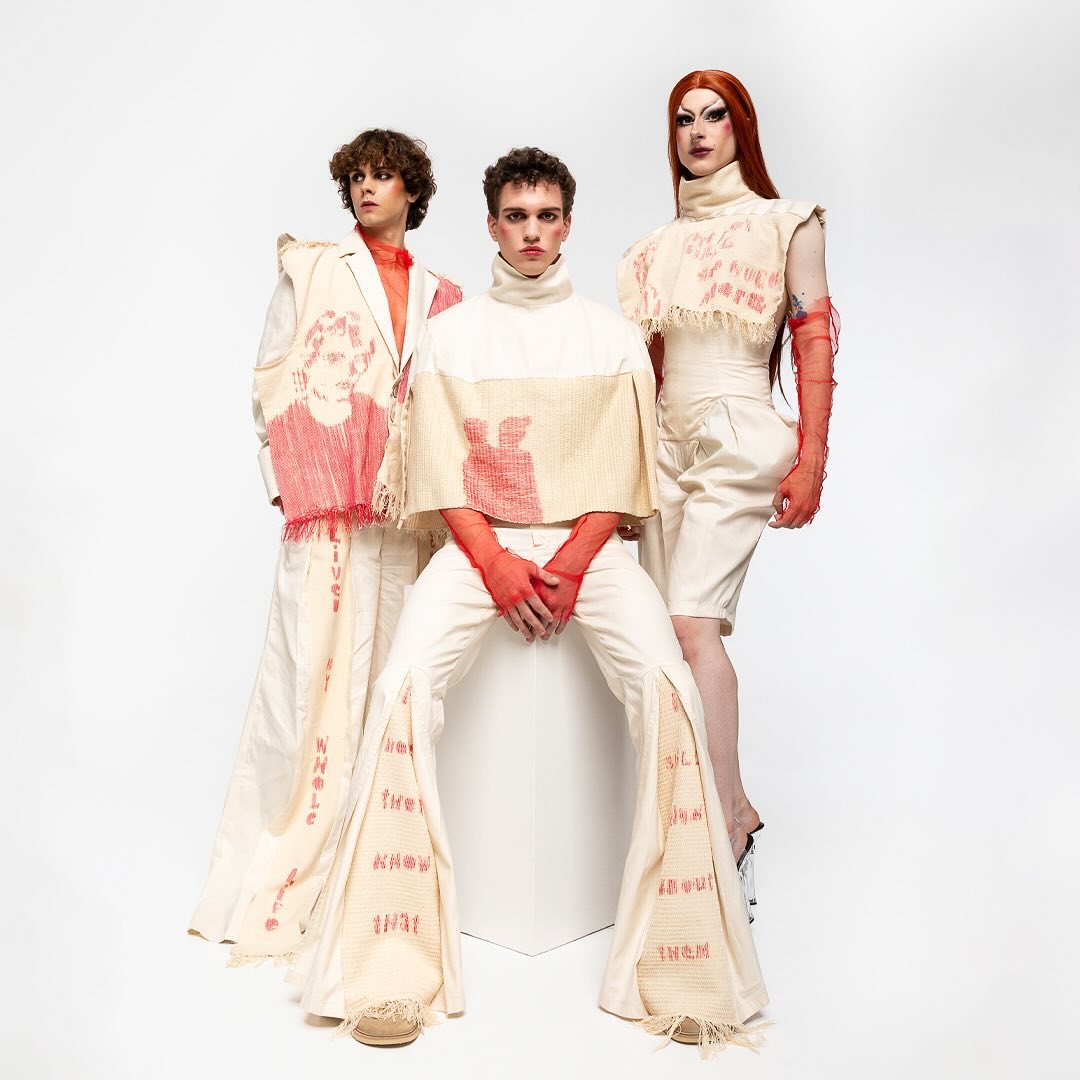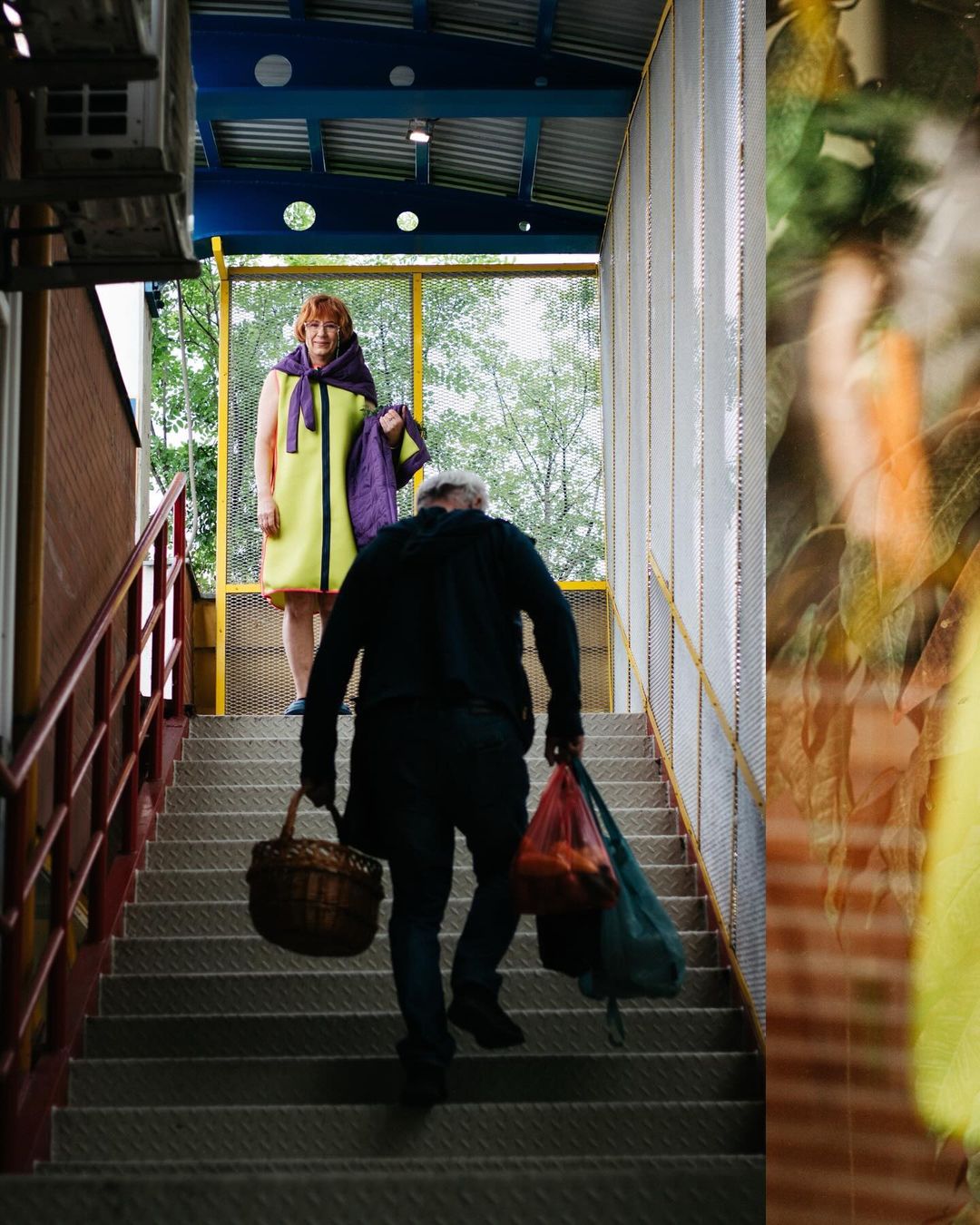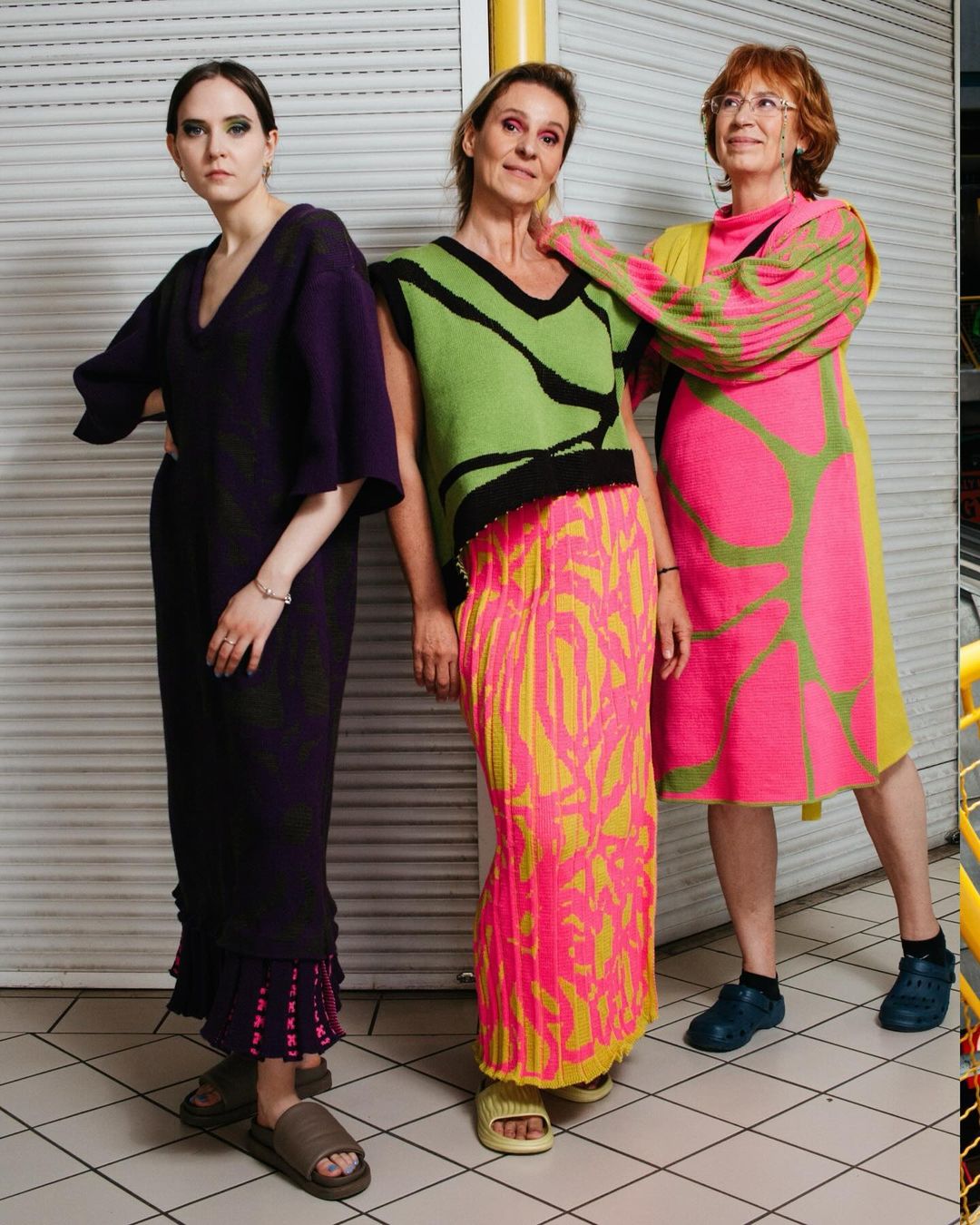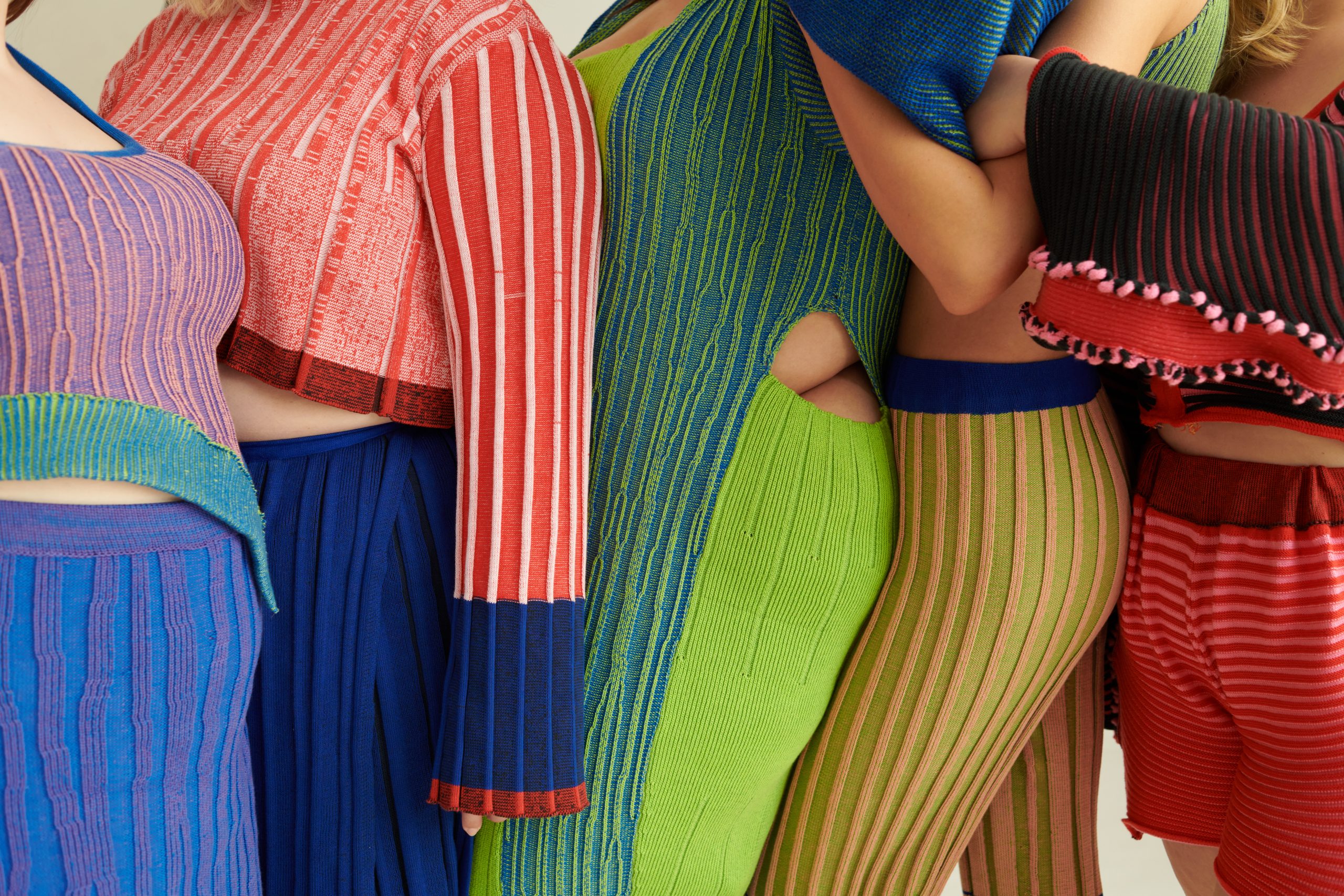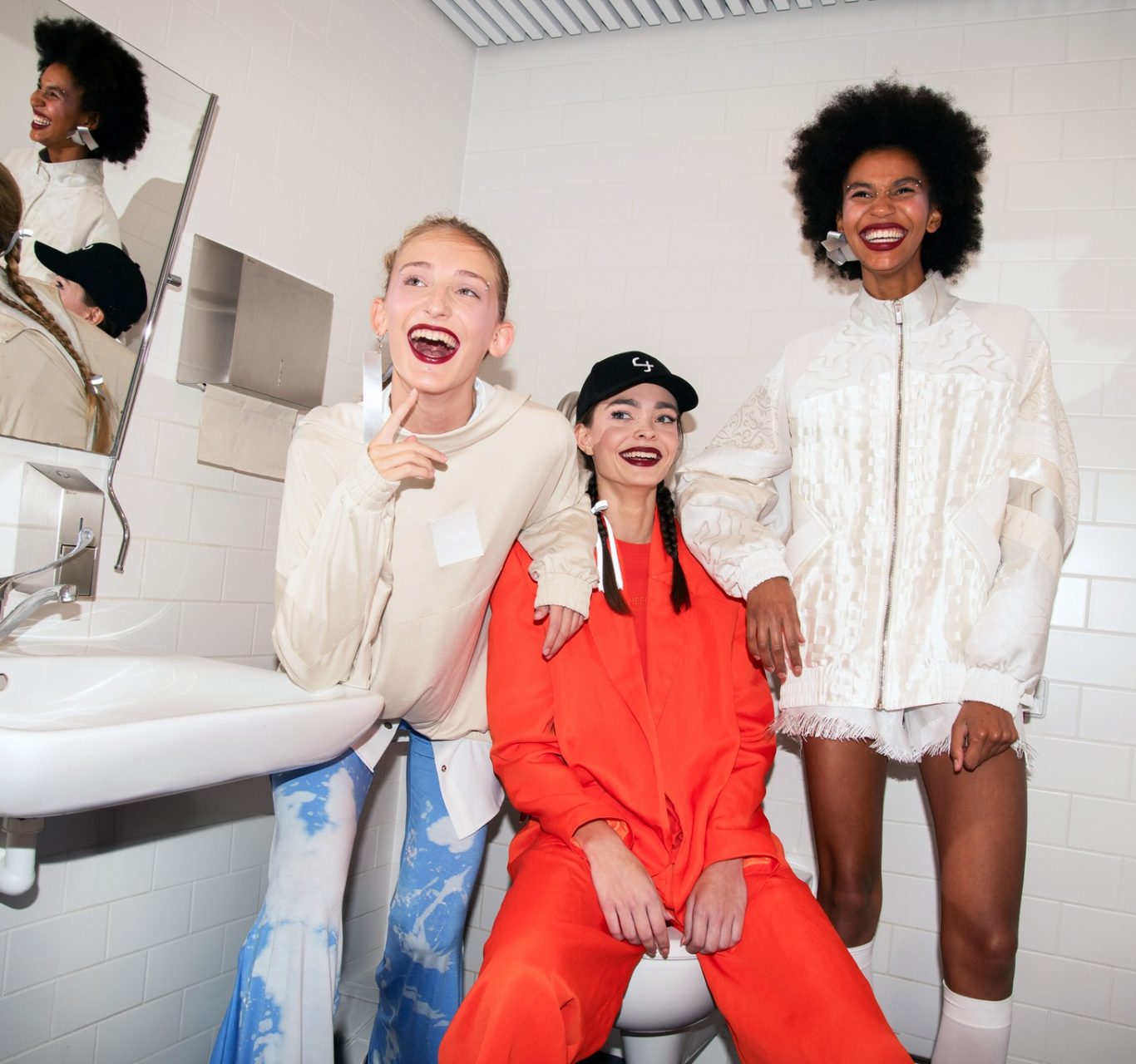

We may be strange, but that’s what makes us unique
When we think of fashion, it often brings to mind something pleasant and appealing, as if it helped us connect with a more aesthetic and effortless side of life. Perhaps that’s precisely why it’s so compelling when topics like ageing, mental (and physical) health, or the search for identity emerge in the world of glamour. The graduate collections presented at the MOME Fashion Show reflect this duality, offering a glimpse into how young designers perceive inclusion, the relationship between tradition and contemporary trends, and the harmful mechanisms of the fashion industry.
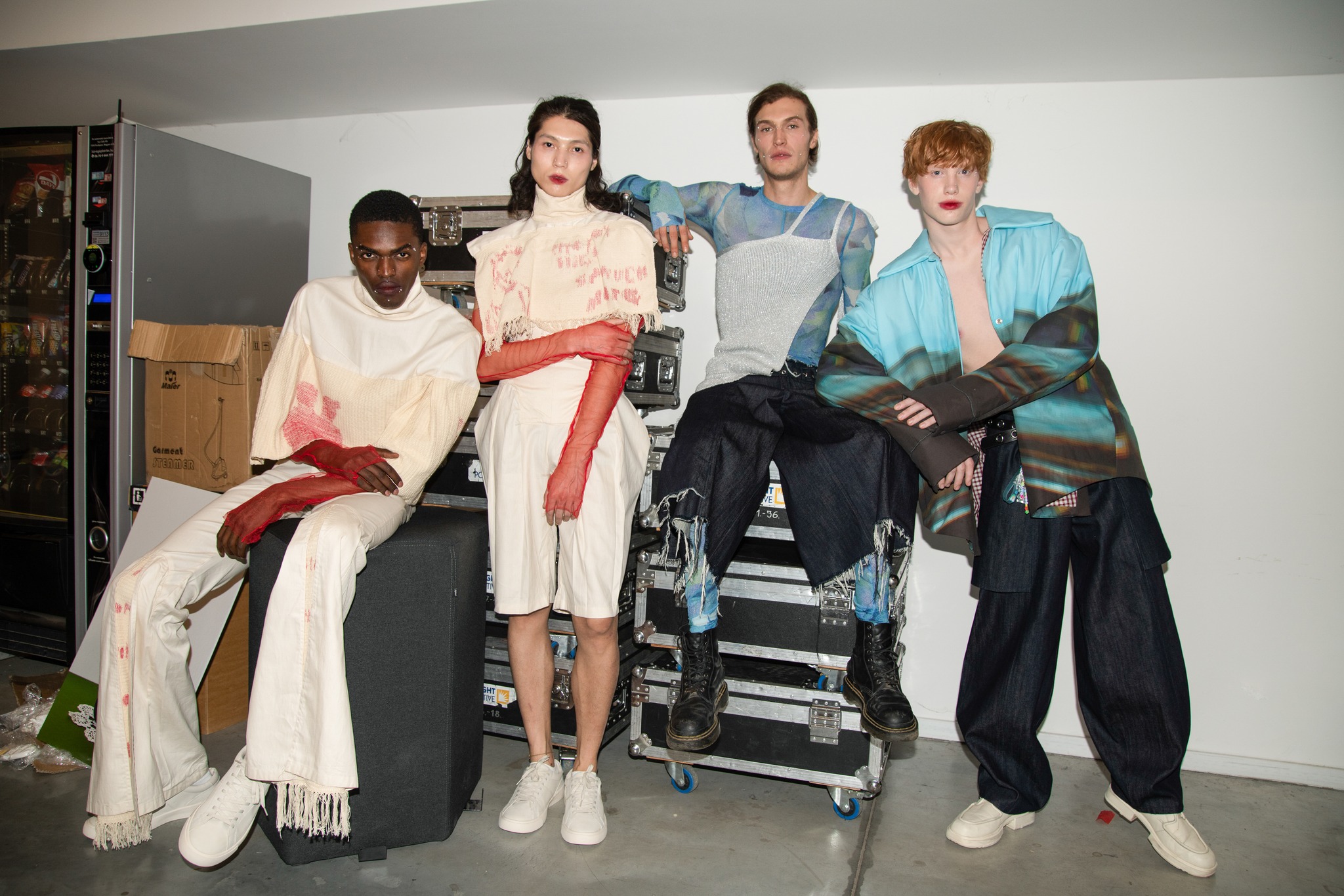
Textile messages and an alumni parade
This year, students were in charge of creating the entire visual concept of the show, from the catwalk to the installation elements of the related exhibition. The event’s guiding theme was “message recorder” or “answering machine” – an unusual choice, but one that, as interpreted by the designers, proved infinitely versatile. The collections, at times boldly and at others through subtle gestures, pushed the boundaries set by society. Through textiles, the young artists expressed – or, if you prefer, recorded – their messages by reinterpreting personal and collective identities.
The show began, as it almost traditionally does, with a brand founded by MOME alumni, THEFOUR, debuting their rebellious yet not entirely unexpected SS25 collection. From the minimalist CSAKAZÉRTIS shirt to the grand earrings and the IKEA bag-inspired high-heeled slippers adorned with recycled polypropylene, the brand combines the casualness of streetwear with elegance. Designers Anett Gálvölgyi and Márton Miovác recently opened a store on Lázár Street behind the Opera House, and could thus serve as role models for the younger generation of designers.
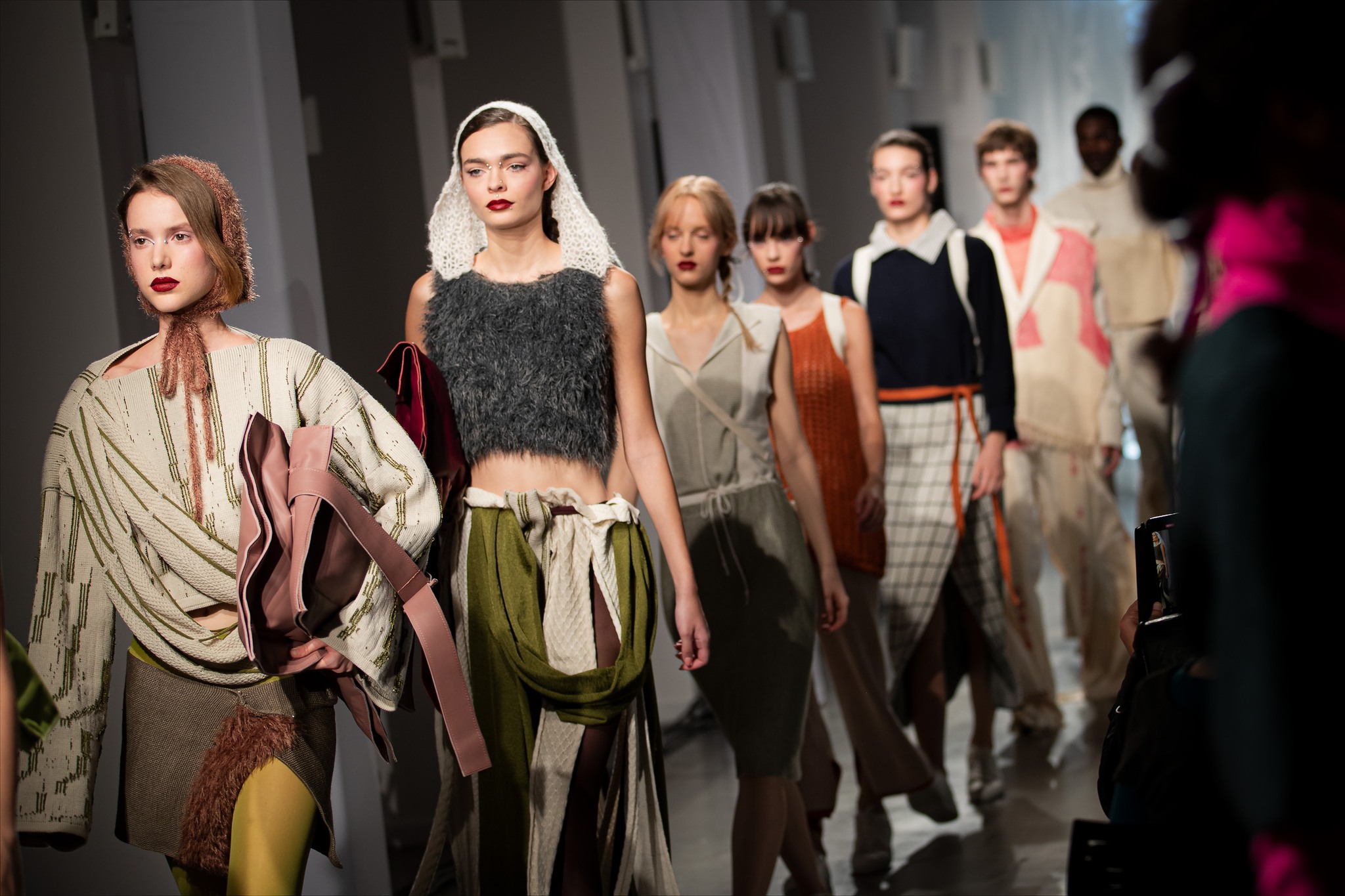
I Design, therefore I am?
But let’s get to the heart of the matter – the show must go on. Twelve fresh BA and MA graduates debuted their collections on the catwalk. Two things stood out during this ephemeral presentation. First, a sense of boundlessness, which manifested not only in the diverse use of materials but also in multi-dimensional solutions. Nearly every design featured oversized shapes and grotesque elements, unsurprising given the current predominance of the baggy style trend. The second, almost self-evident, was that each artist was offering a piece of themselves. Being emerging fashion designers, their identities inevitably came through strongly in their collections on the catwalk.
But how does identity take shape? Liza Borcsik’s collection, Mirror, Mirror on the Wall, is built around an innovative material concept, playing with the aesthetics of reflection. The collection’s colours and patterns reflect environmental influences, suggesting the extent to which we are shaped by external factors. Yet, one’s sense of identity is sometimes more complex and deeply rooted.
Since the Gombold újra! initiative, the incorporation of folk values into contemporary design has once again taken the spotlight. According to a timeless observation by Mrs. Zsindely née Klára Tüdős (1895-1980), a dress may evoke folk art via its material, silhouette, or decoration, but never in all three at once. Following this principle, Náda Krausz and Nóra Keresztes drew from tradition, yet imbued folk motifs with fresh, creative solutions, bringing new dimensions to these traditional forms.
Náda Krausz’s What Remains for Us? collection highlights the designer’s Serbian-Hungarian identity. Alongside a cheekily rendered national tricolour, the peškir – a textile used in Serbian weddings – serves as a deeper reference, adding further layers of cultural meaning. Krausz’s work also focuses on the vanishing tradition of bocskor-making (moccasin-like traditional footwear). This cultural duality reflects that our heritage is far more nuanced than the well-known iconic motifs suggest commonly associated with it.
It’s no coincidence that Nóra Keresztes focused on the traditional attire of Gyergyó, a region in Transylvania: the infinite interplay of black and red, drawn from Székely folklore, is seamlessly complemented by modern elements. Her pieces merge dramatic details with the simpler forms of peasant life, suggesting a contrast between the self-expression of two eras.
Gergő Gethe’s Woven Memories collection is a deeply personal journey, blending childhood memories with current experiences, all accompanied by text. The work challenges traditional gender binaries, elegantly showcasing the freedom of self-expression – proving that even men can wear corsets, and do so with style. Pushing the boundaries of classical notions, his collection is a celebration of artistic exploration.

On the subject of confronting patriarchal norms, Csenge László’s hyperfeminist, girlhood core-inspired Embrace Your Inner Child collection boldly celebrates the power of young femininity. The Embrace Your Inner Child collection brings to life the childhood experiences of Gen Z girls, with pastel shades and chaotic patterns reminiscent of 90s upholstery trends, while subtly alluding to the tension between childhood innocence and the transition to adulthood.
Alongside the teenage girl aesthetic, another, less prominent female archetype has emerged in contemporary fashion: the iconic figure of the Eastern European grandmother is experiencing a renaissance. Regina Nagy’s Golden Vint Agescollection pays homage to this long-invisible demographic, showcasing vibrant colours and vintage, hand-knitted details, crowned by an oversized, hand-knitted balaclava.
Finally, Fanni László takes us far from the familiar. Her master work is not merely a collection, but a world unto itself, ruled by strangeness. Weirdocore is based on the distortion of everyday forms and structures, twisting them to the point where they become unrecognisable. Her aim? To elevate weirdness to an artistic level in a bold and provocative way. As the silver cockroach coat floated delicately across the futuristic space to close the show, it was clear that she had succeeded.
Fashion for the soul
While the fashion show was for those in love with the moment, the accompanying exhibition catered to those given to immersing themselves in a single piece. The exhibition featured an unconventional collaboration: a joint collection by MOME and Mountex, presented by the artists of Willany Leó in a performance that blurred the lines between functionality and art.
In a similar vein, Zsófia Anna Kormos’s doctoral research Artemis straddles the line between fashion and technology. The innovative wearable garment uses an app to regulate heat and micro-vibrations to alleviate menstrual pain. Not only is it practical and aesthetically pleasing, but it also highlights the significance of femtech initiatives in Hungary, where period poverty remains a pressing issue.
Visibility may not be the solution, but it’s undeniably important. Lala Tóth’s Diploma Project collection explores the blurred lines between artist and their work. The designer’s personal experience of instinctively thinking to protect their collection first in an accident highlights how excessive identification with one’s work can become harmful. The simulated destruction and crying selfie installation illustrate the harmful mechanisms of the fashion industry, prompting us to rethink the relationship between artist and their art – at the end of the day, which one matters more?
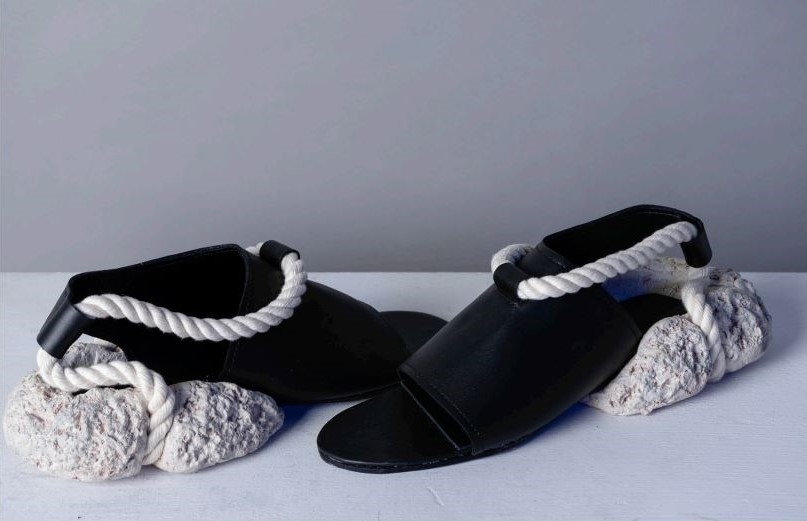
Mental health is important both within and beyond the industry. Noémi Horváth’s shoe design reflects the severity of the problem anxiety represents and the search for calm. The soles of the collection are made from mouldable epoxy paste, sturdy enough to support the wearer’s weight; yet behind the seemingly heavy appearance of the footwear lies a sense of lightness – just as anxiety may seem overwhelming at first glance, but can be eased with the right solutions.
As Miranda Priestly famously remarked in The Devil Wears Prada, fashion doesn’t just shape our appearance, it shapes our everyday lives – a sentiment underscored by this year’s Fashion Show. The creations on display weren’t merely reflections of fleeting trends, but dialogues between society and the individual. If there’s one thing to be learned from this, it’s that true style lies not in trends, but in self-expression – sometimes in our vulnerabilities, and at other times, in our eccentricities.
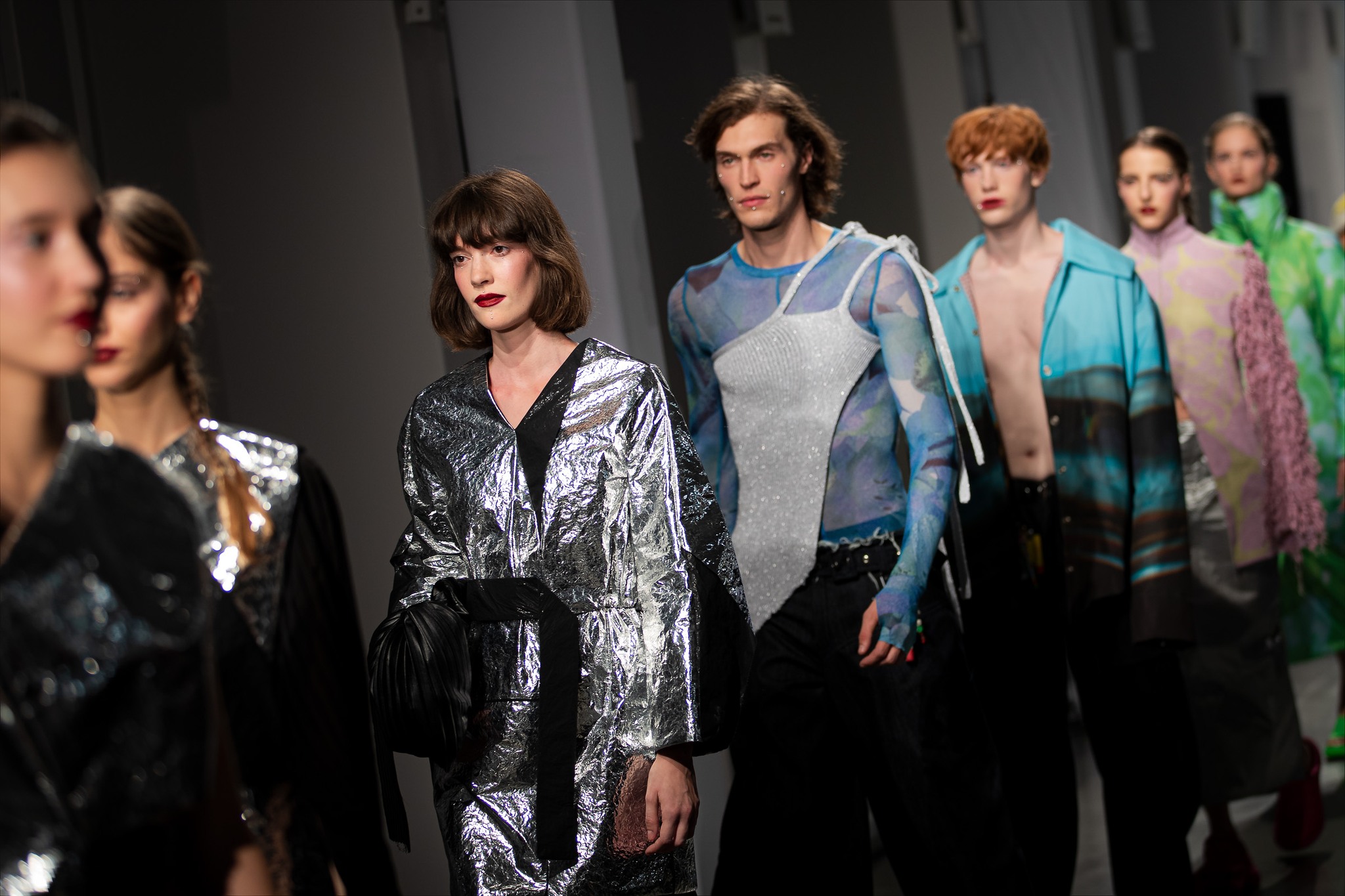


// /
[1] Péter Zsolt: Divatszociológia (Fashion Sociology)
// /
Designers featured at the MOME Fashion Show: Boglárka Bakos, Hanga Beöthy Kiss, Liza Borcsik, Sára Dimák, Csenge Diviki-Nagy, Nóra Frankó, Orsolya Gerencsér, Gergő Ghete, Noémi Horváth, Fanni Huszár, Nóra Keresztes, Zsófia Kormos, Náda Krausz, Karina Kürti, Csenge László, Fanni László, Malu Lücking, Regina Nagy, Boglárka Pitenyák, Kamilla Dorottya Pomykala, Barnabás Sonnevend, Janka Bella Szabó, Lala Tóth, Anna Winkler, Emese Zubornyák.
Professional leads of the MOME Fashion Show: Head of the MA Fashion and Textile Design programme at MOME and co-founder of KELE Clothing and BOO Studio Ildikó Kele textile designer and teacher and founder of the VYF scarf brand Viola Balázs
The course leads of the course related to the show’s visual elements were Dorottya Féja and Csenge Vass.
